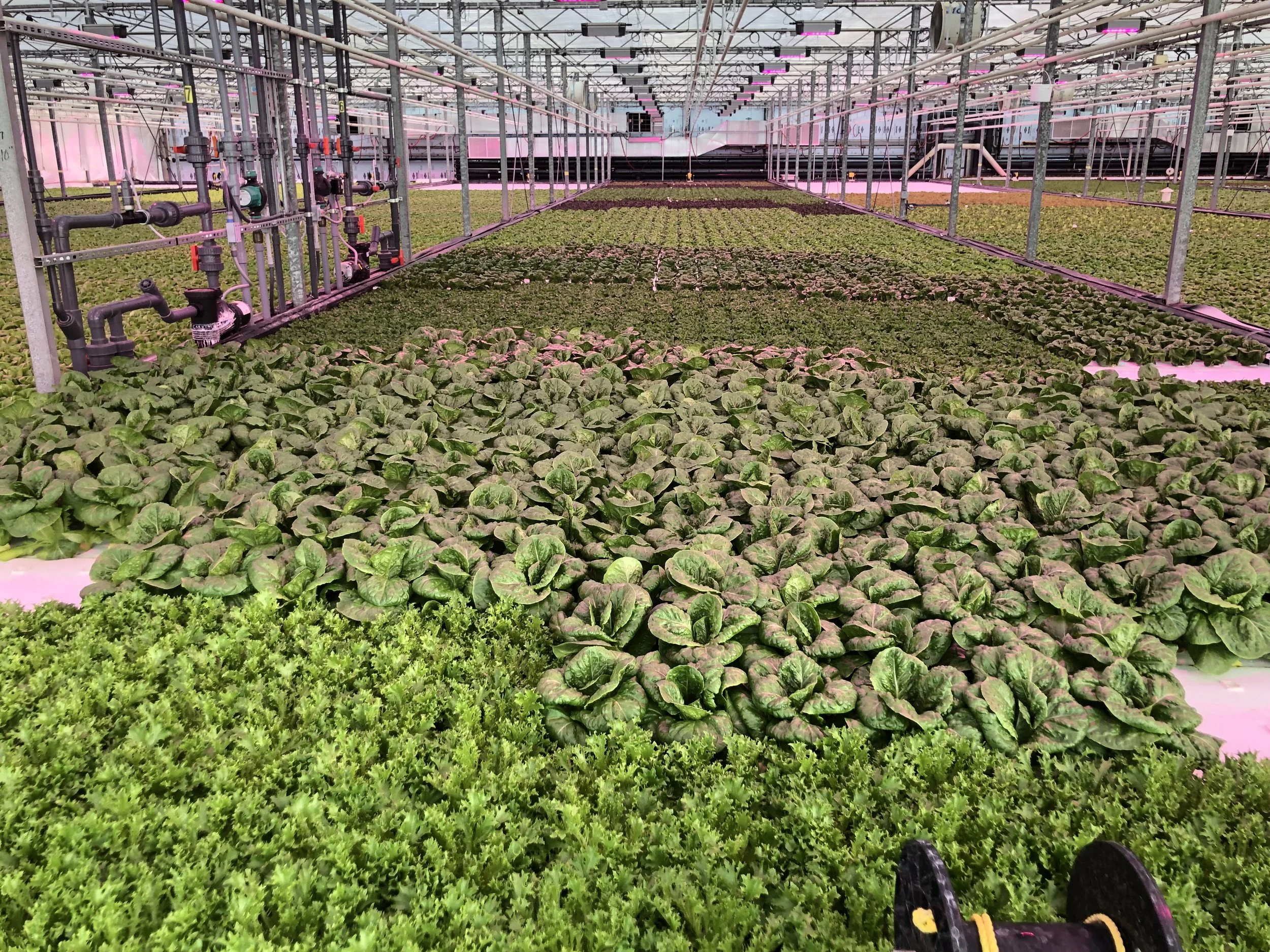May 28, 2019
How This Farm Went From Growing Commodity Crops to Hemp and Lettuce

Agritecture sat down with Wheatfield Gardens before this year’s GreenTech Conference in Amsterdam. Wheatfield Gardens is participating at the Vertical Farming pavilion at GreenTech 2019.

What is Wheatfield Gardens, and how did it begin?
Wheatfield Gardens is a hybrid greenhouse vertical farm. It started as a purpose-built Vine Crop greenhouse built by Village Farms in the early 1990s. We put together a team of investors and technologists that purchased the facility in 2015 to develop CEA tools and technologies. It is a Dutch designed 5-meter tall Venlo style glasshouse structure. There is a total of 12.5 acres under glass. At the heart of every large greenhouse is a Headhouse. Ours is a 20,000 square foot steel building that houses critical systems. This is where we focus our tech development. All of the energy, fertilizer, water and CO2 that supports plant life emanates from this building. In the past, it functioned as a packhouse/cooler for tomatoes and cucumbers. We pivoted away from commodity crops like tomatoes and cucumbers. We started growing Hemp and Lettuce in 2018. We retrofitted the packhouse working areas to become vertical growing, drying and curing areas for Hemp/Cannabis crops. We now grow .75 acres of head lettuce and herbs in a DWC system. We also grow Hemp for CBD year-round indoors and seasonally on 11 acres.
Can you tell us a little about your first-of-its-kind growing technology, how it’s used, and why it’s such a game changer for growers?

The integration of an on-site CoGen Power Plant with an industrial scale agricultural facility has the potential to disrupt the conventional field-grown fresh produce industrial complex that dominates the US food market, despite the waste and inefficiencies. The energy intensive nature of CEA (Vertical Farms) drives up costs of salable grams grown beyond what field farmers costs are despite the 1000s of miles of travel required to access east coast markets. Bending that energy cost curve using scale and resource efficiency offers a chance to compete with water intensive field grown practices. We use natural gas because of its cost/reliability and post combustion benefits. Our technology takes every cubic foot of natural gas that we buy and maximizes the use by burning it to co-generate electricity and heating/cooling through combustion. Post combustion we capture and use the CO2 and water that results. Up until now that fuel gas was often billowed into the atmosphere without consideration. This and other resource efficient efforts we make lowers costs of goods grown to compete with field grown crops.
Who are your current customers, and how do you hope to expand your distribution chain?
Wegmans, Tops Markets, Dashes plus local restaurants and schools. We work with a USDA Food Hub called Eden Valley Growers that aggregates loads to retail distribution centers that helps farmers get their niche products to retailers efficiently through cold storage and logistics management. Distribution centers often prefer full loads.
We plan to work with the NYS Dept of Ag and Markets and county public schools to develop young fans of our freshness. The Farm-to-School program incentives school lunch programs to source dairy, fruits and vegetables from local farms. If they are able to source 30% of those items locally they get extra $ per meal served, plus it’s the right thing to do. Our year-round lettuce and herbs go a long way to help school districts achieve those goals in winter months.

What are the unique challenges and opportunities to growing hydroponic lettuce in an environment like Buffalo, NY?
Weather extremes posses a real challenge to growing lettuce and herbs year-round. This past winter we saw ambient temps that reached -16F. We use energy curtains to enhance the solar gain during short winter days and prevent warm air from escaping through the glass roof. We take a very active approach to environmental controls for lettuce. Vented greenhouses use air-movement and the natural evaporative cooling effect of plant transpiration to maintain steady temps in the hot summer days.
Author Bio: Paal Elfstrum is a former Bio-Pharmacuetical Entrepreneur. In 2015 he began researching and developing Controlled Environment Agriculture technologies that make sense. Lowering the costs of high-quality saleable grams grown using resource efficient technology and tools is the mission of Wheatfield Gardens.
